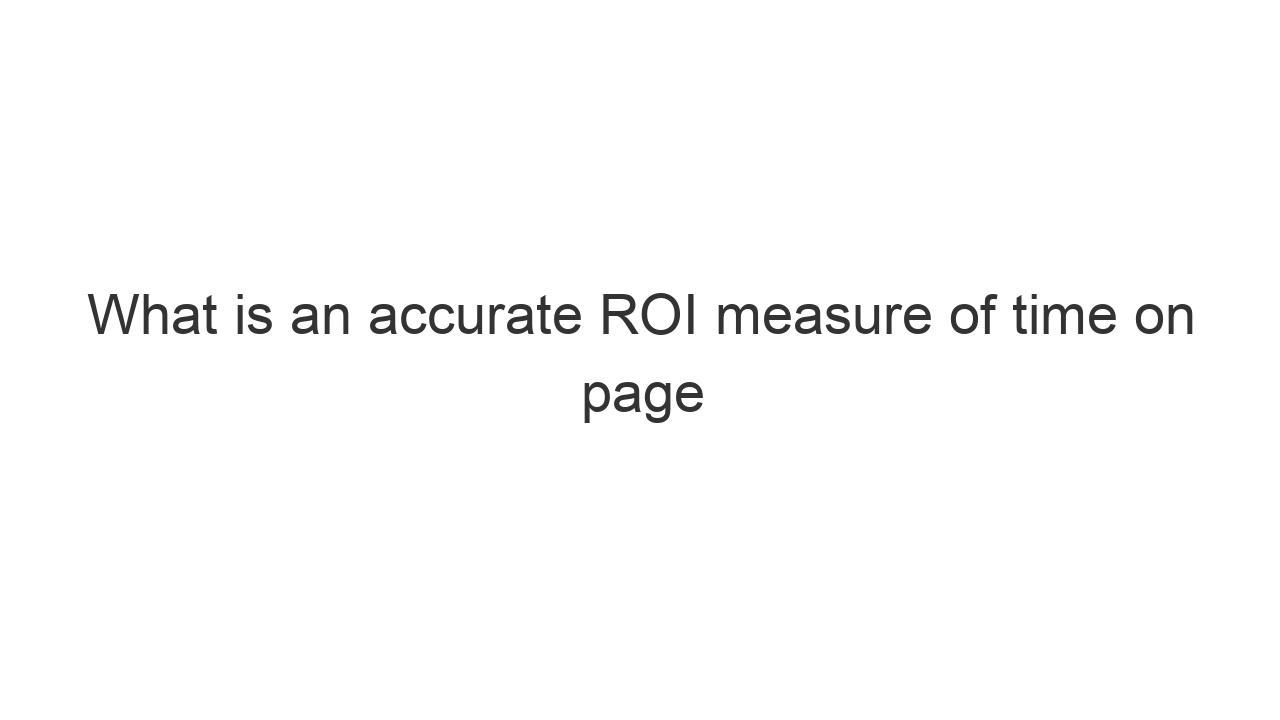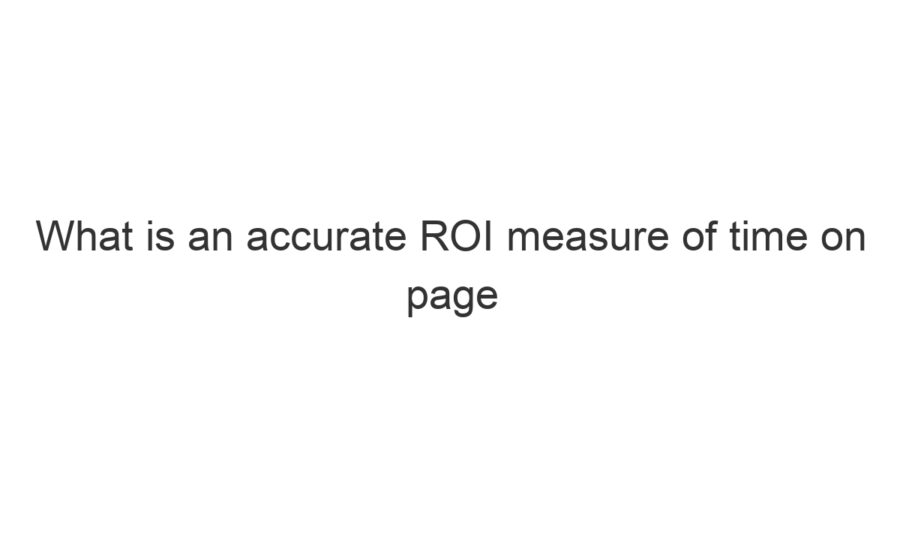Time on page measures the difference between when opens a webpage and then clicks another link. Or opens a new tab and visits the same domain. A common fallacy is that time on page represents all users, when it only captures those that complete those actions. So it is not reflective of an overall audience. It tends to skew up.
This makes it harder to link to an ROI measure because it is an inconsistent metric. It would be better to use a newer metric like Attention, which measures second by second, how long someone engages on a page for ALL users. This gives a more accurate view of what the customer is doing.
That way, you can view the attention by piece of content, by traffic source, and compare different initiatives on a level playing field. Enabling you to establish ROI more effectively.

|
|---|



